

Photographs of Ten Different Healthy Corals
Healthy Corals
all photos by Craig Quirolo
Boulder Star Coral (Montastraea annularis)

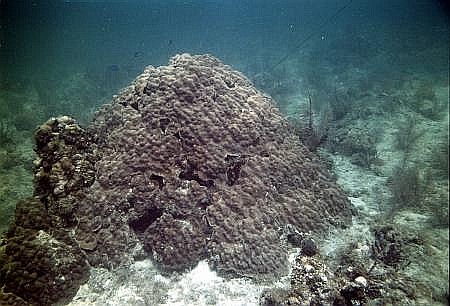
Colonies grow in irregular mounds. The long thick columns have enlarged dome tops. The surfaces are rough and in plate-like sheets.
Size: 1-10 feet
Color: Green to brown, yellow brown and grey
Habitat: 20-70 feet, they are often the most common coral at this medium depth

Boulder Brain Coral or Giant Brain Coral. (Colpophyllia Natans)
Colonies form large rounded domes. The surface is covered with a convoluted system of ridges and valleys looking very much like a brain.
Size: 2-7ft
Color: Ridges are brown and valleys are green, tan or whitish
Habitat: 20-80ft., they are often found at reef tops
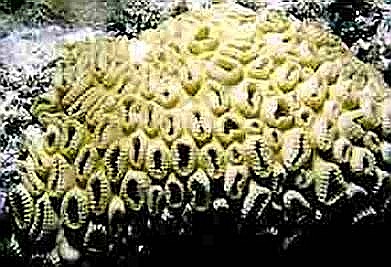
Elliptical Star Coral (Dichocoenia Stokesii)
Colonies form small rounded heads or domes. Individual coralites are large, about 0.5-0.75 inches and protrude up about 0.25 inches. They are often elliptical or in a Y shape.
Size: 4-15 Inches
Color: Cream to yellow and brown
Habitat: 12-225 feet
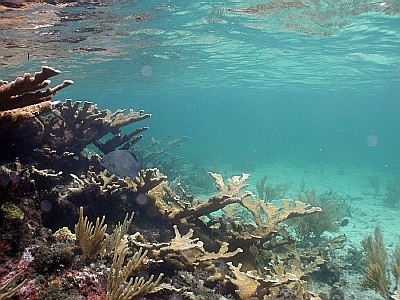
Elkhorn Coral (Acropora Palmata)
Colonies form flattened branches that resemble elk horns. The branches orientated parallel to surge direction.
Size: 3-12ft.
Color: Brown to yellow brown
Habitat: 1-55ft., shallow areas where there is constant wave action and wave movement.
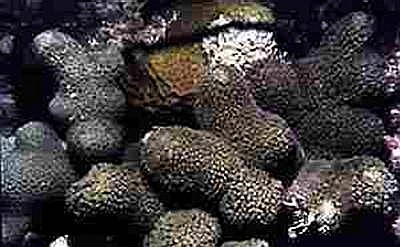
Finger Coral (Porites Porites)
Colonies form thick, stout branches. During the day, the extended polyps give the coral a fuzzy appearance. Finger coral are often found with brittle stars and sea urchins living among the compact branches.
Size: 1-4ft
Color: Beige to yellow brown, brown, grey and grey with purple overtones
Habitat: 3-160ft
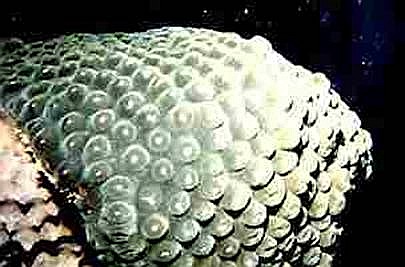
Great Star Coral (Monastraea Cavernosa)
Colonies often form massive boulders or domes. At greater depths, the colonies more often form large sheets. The individual coralite is large and blister-like, often a half inch in size. The great star coral is also known as large star coral.
Size: 2-8 feet
Color: Yellow brown, green, brown and grey
Habitat: 40-100 feet
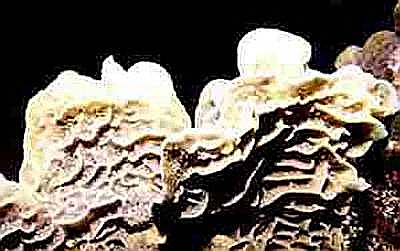
Lettuce Coral (Agaricia Agaricites)
Colonies form thickly encrusted flat plates with ridges and long valleys. They grow in shingle-like plates.
Size: 4in-3ft
Color: Tan to yellow brown, grayish brown to chocolate brown. Lighter shades may have a bluish or purplish tint
Habitat: 3-240ft, they can also be found in mangroves and back reef areas
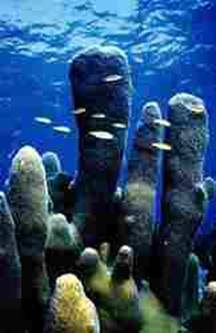
Pillar Coral (Dendrogyra Cylindrus)
Colonies form heavy cylindrical spires that grow upward forming large mounds.
Size: 4-10ft.
Color: Light tan to golden brown and chocolate brown
Habitat: 4-65ft., they are found on both flat and sloping bottoms
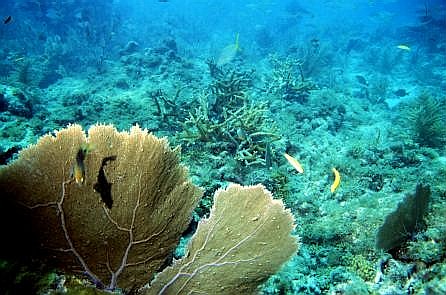
Sea Fan (Gorgonia Ventalina)
Colonies form large fans that grow in a single plane. The fan is a tightly-meshed, interconnected network of branches.
Size: 2-6ft
Color: Purple
Habitat: 3-100ft, they are often found on the seaward side of shallow reefs and slopes where there is water movement
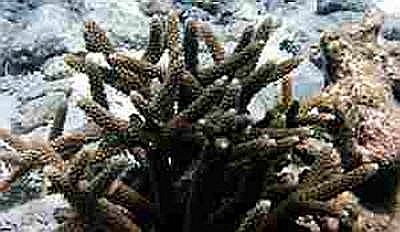
Staghorn Coral (Acropora Cervicornis)
Colonies form antler-like cylindrical brances. These branches can form dense thickets with only the outer brances surviving.
Size: 1-8ft.
Color: Brown to yellow brown with white tips
Habitat: 10-60ft., Shallow to intermediate depths.
If the biota, in the course of aeons, has built something we like but do not understand, then who but a fool would discard seemingly useless parts? To keep every cog and wheel is the first precaution of intelligent tinkering. Aldo Leopold, Round River, 1993.
Reef Relief Founders.com


